Relocation of Bentley car-body production
Several production lines moved in only four months
Working on behalf of its customer Volkswagen Sachsen GmbH, the SCHOLPP team from the Chemnitz location relocated a complete car-body production system from the VW plant in Bratislava, Slovakia to the VW plant in Mosel, Saxony. Within just four months, SCHOLPP dismantled the car-body production system for the premium Bentley Bentayga model and transported it to the new destination, where it was reinstalled and commissioned.
The scope of the contract included several production lines: first, bodyshell assembly 1 and 2; second, bodyshell assembly 3; third, interior and exterior side panels; fourth, front and back door assembly; fifth, assembly and laser systems for single components, doors, and side panels. The overall size of the individual assembly lines was 150 x 8 meters. The individual components had maximum weights of up to 20 tonnes and maximum dimensions of up to 3 meters.
The unique factors of the project were already clarified in the planning phase. The high level of system complexity demanded coordinated collaboration between various trades and partner companies. Many work steps had to be fitted into a tight schedule of four months for dismantling, transport, and reinstallation. In addition, the implementation of the project was supposed to start during series production. All of these factors made it necessary to use two-shift staffing.
Project sequence in five phases
The planners from the Chemnitz SCHOLPP team designed a 5-phase sequence for the VW project. Within three weeks, the installation team first dismantled the systems at the Bratislava plant. At the same time, in the second step, the system parts were promptly packaged, loaded, and transported in 110 truckloads to Mosel, near Zwickau. Third, the system parts were unloaded and placed in temporary storage at the new location. Fourth, after this buffer phase, the SCHOLPP team got to work on the mechanical reinstallation of the systems. The fifth and final step was to provide support to the VW plant team in commissioning the systems.
Challenges: pace and coordination
From the outset, it was clear that they had to keep a high pace. At the same time, it was necessary to ensure that all parties involved – customer, service provider, and partner companies – were working together in a coordinated manner. So, for example, the labeling of all system technology had to take place during bodyshell production, within just eight work days. It was possible to meet this requirement because production employees and the ten SCHOLPP fitters worked with a partial time offset, e.g., during breaks and shift changes.
There was no possibility of placing components in temporary storage during the dismantling of the systems. This meant that everything had to be loaded and transported away just-in-time, which was strenuous and required a high level of coordination effort. A total of 72 employees worked consistently in two shifts in the dismantling process. Of course, such a large team cannot operate completely on its own. Working together with the customer Volkswagen, a management staff was set up on site, consisting of two project managers, a personnel deployment manager, a logistics specialist, and two assembly managers.
Logistics and organization precisely timed
Dismantling, transport of the system parts from the dismantling location to the trucks, and truck transport to Germany was completed within just 20 work days. No time buffer was possible in the project sequence until arrival at the new location in Mosel, where temporary storage space was available. 30 train cars were used as temporary storage, and this was processed by additional logistics teams. This made it possible for the cars with the desired components to be summoned promptly when installing the systems. The mechanical reinstallation of the systems was completed within a few weeks. At the same time, other partner companies of the customer handled the reinstallation of the electrical and piping systems. The different companies coordinated with each other in several construction meetings that included all involved. The management staff for the reinstallation in Mosel was larger than the staff in Bratislava, because various project engineers from the VW Group were responsible for this.
The measure of all things: precision to the nearest hundredth
High precision during installation of the assembly system was an important prerequisite for supporting the commissioning by the VW workers. SCHOLPP achieved this by precisely aligning all system parts to one another, so that the readjustment effort for the VW team during commissioning was kept as low as possible. Deviations in the system parts were to be in the hundredth-of-a-millimeter range. SCHOLPP therefore provided personnel that had the most experience with this precision work.
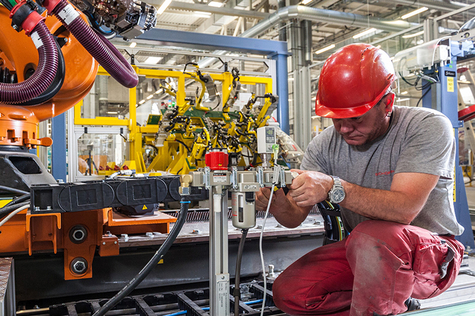
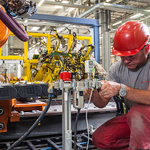
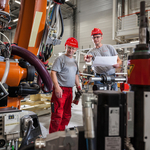
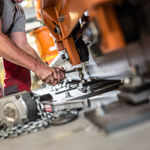
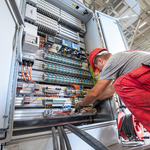
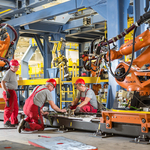
Volkswagen Sachsen GmbH
Industry:Automotive
Project type:International relocation projects
Task:Relocation of car-body production for the Bentley Bentayga from Bratislava, Slovakia to Mosel, near Zwickau in Saxony
Equipment used:5 tool containers, 8 different forklifts (max. 10 t), 10 t electric in-plant crane, mini-crawler crane, 10 lifting platforms
Unique factors:Collaboration between various trades, high level of system complexity, tight schedule for dismantling, transport, and reinstallation, implementation during series production, two-shift staffing
Contact person:Want to know more about this project? Please contact us.
